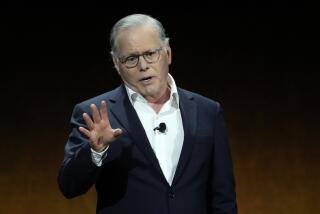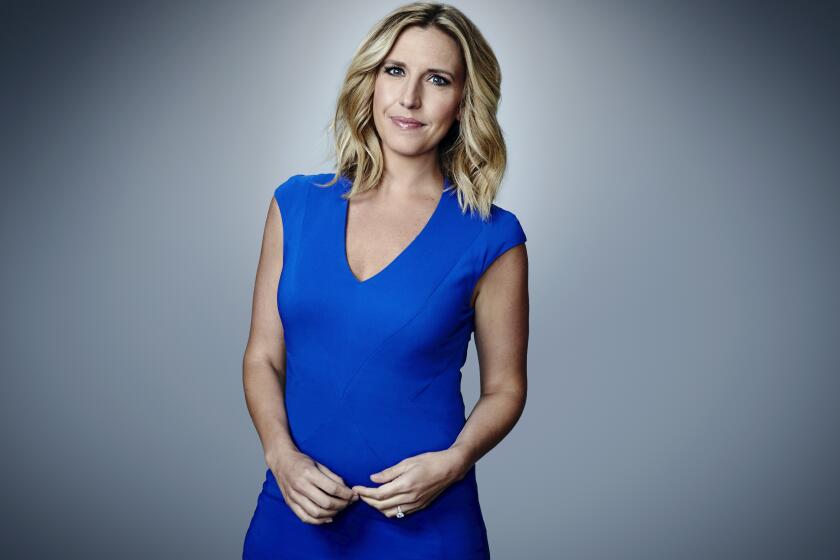AT&T chief is focused on using Time Warner as a springboard into the digital future
AT&T Inc. is losing money on DirecTV Now, Chief Executive Randall Stephenson said Wednesday, but the streaming service is just part of his long-term focus on yanking AT&T into the digital-entertainment future.
The centerpiece of that plan: buying Time Warner Inc., a vast source of movies and shows that AT&T could then stream to its subscribers’ mobile devices and use to sell more ads.
Speaking on Wednesday at the Code media conference, sponsored by Vox Media, in Rancho Palos Verdes, Stephenson pointed to the growth of such tech giants as Amazon, Google, Facebook and Netflix — which all have robust video offerings — as a prime motivator for AT&T to buy Time Warner.
But AT&T is waiting for a federal judge in Washington to decide whether it will be allowed to move forward with the Time Warner purchase.
When asked Wednesday by a television reporter what Plan B was, should the judge squash the merger, the AT&T chief hesitated.
“I don’t even want to go there,” Stephenson said. “Right now we are focused on winning this thing.”
U.S. District Court Judge Richard Leon has instructed both sides in the trial — AT&T and the Department of Justice — to limit what they say in public about the case. Stephenson said he wanted to abide by the judge’s order. The deal wound up in court because the Justice Department sued AT&T in November to block the deal. Leon’s decision is expected by June 12.
AT&T announced the deal to buy Time Warner in October 2016. Its plan has long been to incorporate Time Warner content — the company owns HBO, CNN, TBS, TNT and the Warner Bros. television and movie studio — into its various products, including AT&T mobile phone service.
To compete with streaming-video giants, AT&T believed it needed to get bigger. And Stephenson sees the content produced by Time Warner as a distinct advantage in the new media world.
“I’m a big believer in premium content,” Stephenson said. “And advertisers love the premium content platforms. I actually think there is a major opportunity here.”
For its part, New York-based Time Warner was interested in the marriage because it lacks something that AT&T has: direct relationships with more than 150 million customers who subscribe to AT&T’s phone service or television products, including DirecTV.
Tracking what people are watching and then incorporating those insights into content production is part of the rationale for the Time Warner purchase. If successful, Stephenson said, the AT&T-Time Warner deal could change the economic template for television.
“Can you change the advertising model?” Stephenson said. “Can you change the media experience? We think there are opportunities to really innovate.”
The money-losing DirecTV Now streaming service is a prong in Stephenson’s forward-looking plan.
AT&T bought the traditional DirecTV satellite service, based in El Segundo, in 2015, but that service has been losing customers as traditional TV viewers jettison costly bundles of channels and subscribe instead to lower-cost streaming services.
The migration has weighed on AT&T’s earnings and its stock, and it has largely come from one demographic group: “We knew where the traffic went. It was the millennials,” Stephenson said.
That is the crowd that has the tightest embrace of Netflix, Hulu and other streaming services. So AT&T figured: If you can’t beat them, join them. It launched the DirecTV Now streaming service in late 2016.
AT&T has been offering DirecTV Now at $35 a month (with introductory rates as low as $10 a month). On Wednesday, Stephenson signaled that the company probably will raise the price so it can begin to make money on the service, which now has more than 1.5 million customers.
He projected that DirecTV Now would be cash-positive within a couple of years.
More to Read
Inside the business of entertainment
The Wide Shot brings you news, analysis and insights on everything from streaming wars to production — and what it all means for the future.
You may occasionally receive promotional content from the Los Angeles Times.







